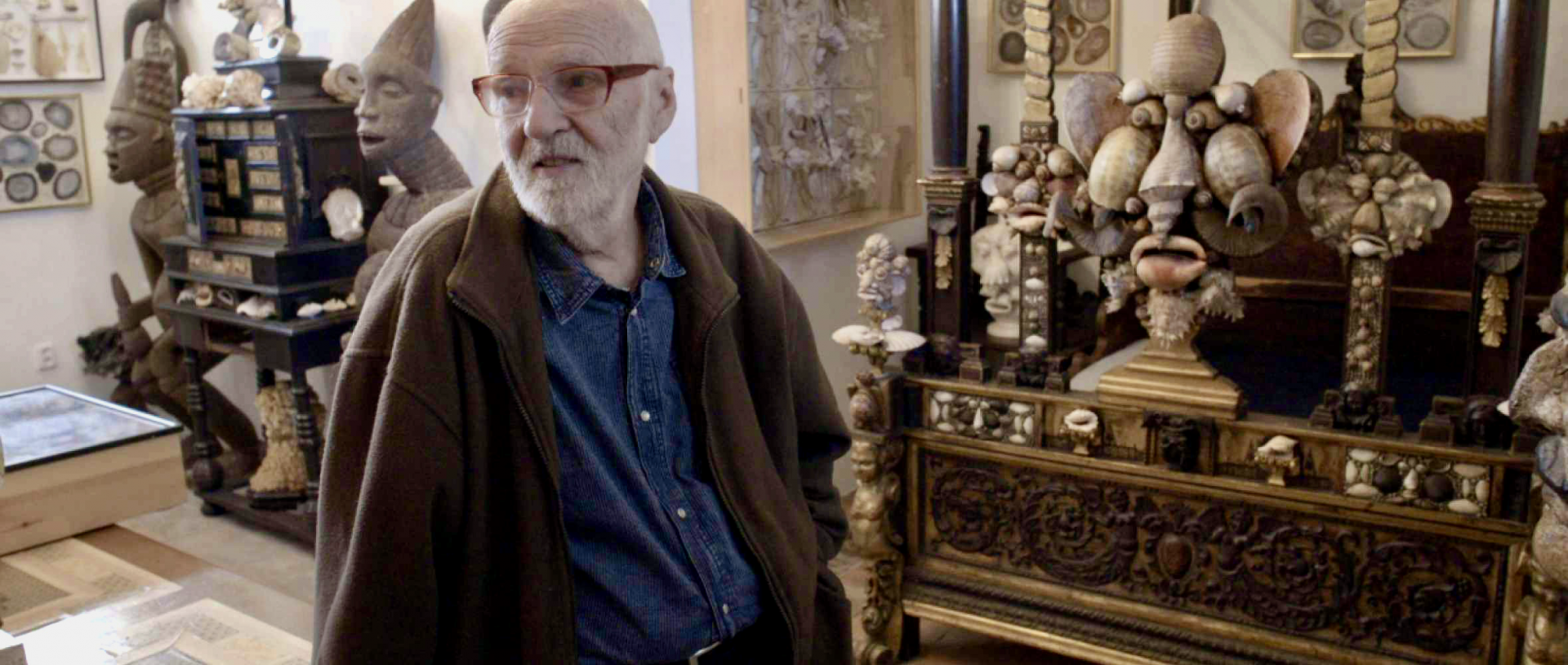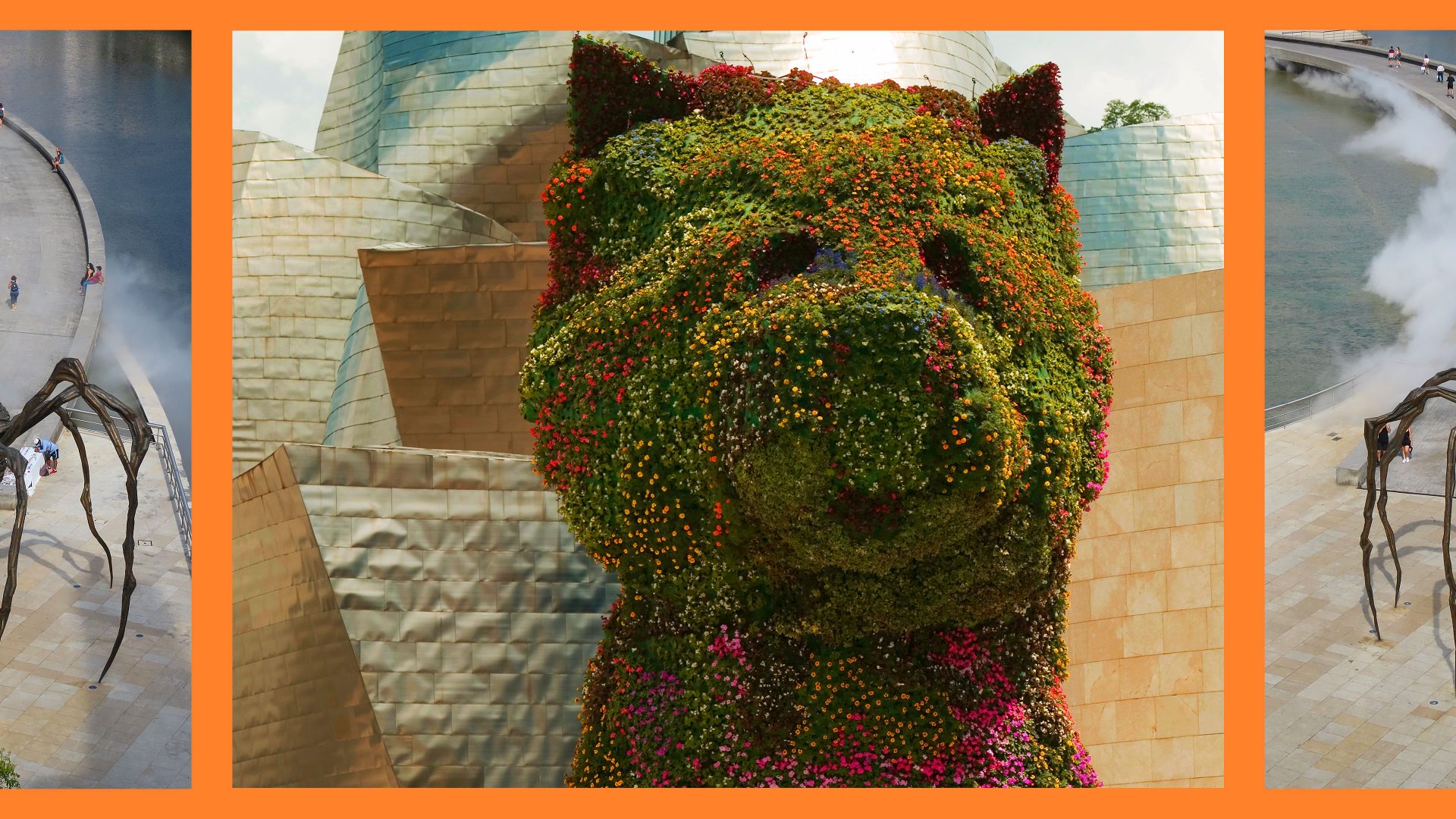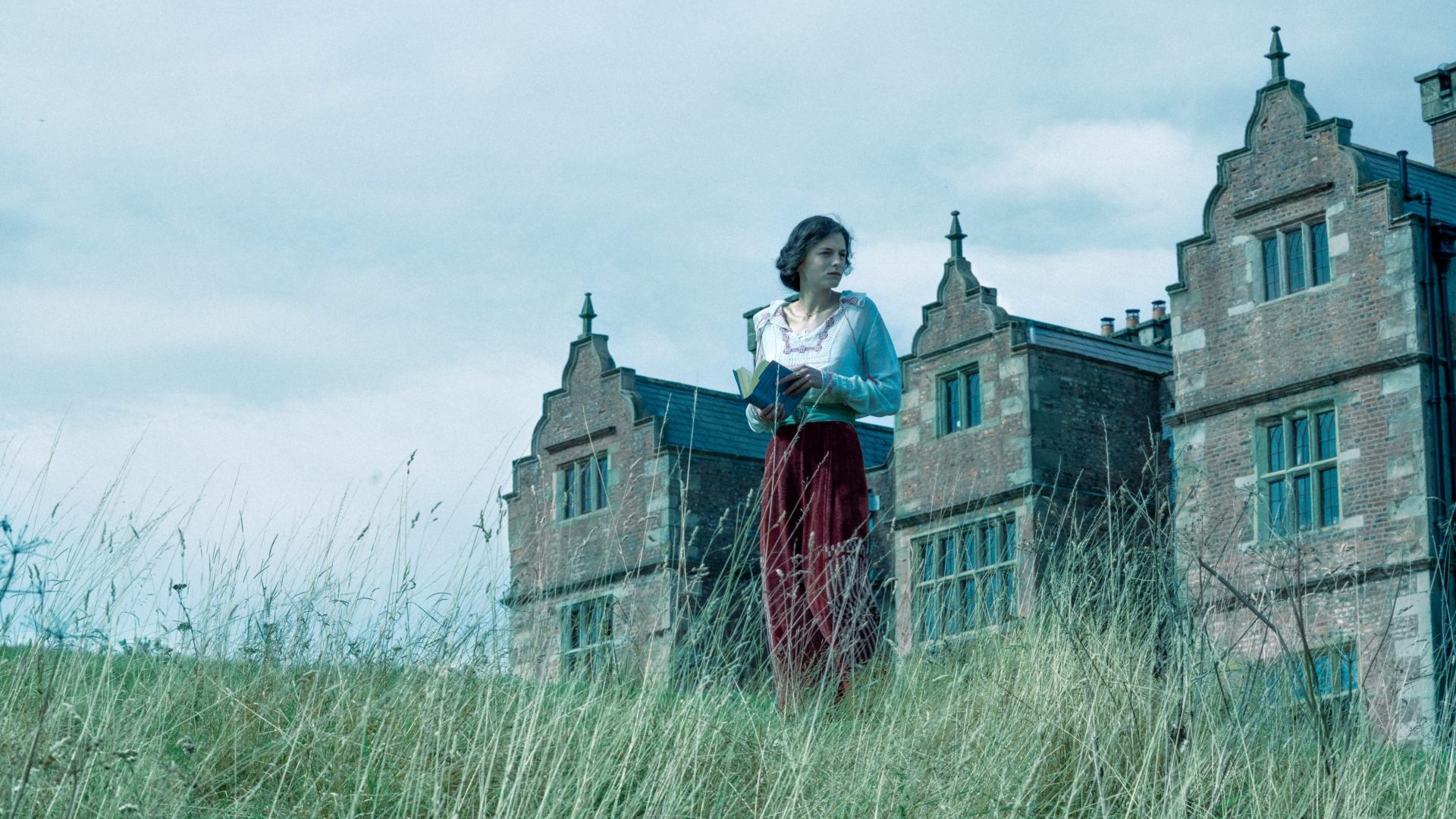Tate Modern, London, 2018. Art historian Krzysztof Fijalkowski is interviewing Jan Švankmajer following the premiere of the director’s new film, Insects. Fijalkowski is asking Švankmajer about his psychomanteum, the small, dark room containing a chair and a mirror that spiritualists use to summon dead souls. Švankmajer explains he built his to contact Eva Švankmajerová, his wife and lifelong collaborator, who died of breast cancer in 2005. He sits in the room for hours at a time, he says, waiting for Eva to appear.
Jan and Eva were inseparable. The Czech poet František Dryje described them as “conjoined twins”. Later in 2018, Amsterdam’s Eye Filmmuseum
staged Jan Švankmajer – The Alchemical Wedding. Among the films, maquettes, artefacts and sets, the exhibition included what Švankmajer calls his medium drawings, drawings that Eva creates from beyond the grave by
directing his hand across pieces of paper while he’s sitting in his psychomanteum. Švankmajer, at 88 years of age, has announced that his
latest film will also be his last. The director’s Kunstkamera documentary is as much a charming celebration of Jan and Eva’s time together as it is an
exploration of the incredible collection of curiosities they gathered over the years.
Born in the former Czechoslovakia in 1934, Jan Švankmajer is one of the
most extraordinary and original film-makers of modern times. Colliding
stop-motion animation with live action, Švankmajer films are Bosch’s Garden of Earthly Delights brought to life. The Mexican director Guillermo del Toro has called Švankmajer’s films “the deepest, most intimate, id-driven form of art”. In a 2007 interview with Vertigo magazine, Švankmajer said his work was a “permanent criticism of the current civilisation”. His moving images use absurdity to satirise a western society stuck in the feedback loop of self-sabotage.
Characters in Švankmajer’s films are hybrid creatures made from old socks
with false teeth and glass eyes, or skulls that sprout doll’s feet to scuttle about on. Fish heads are stitched on to medical instruments. The effect is unsettling and mischievous. Terry Gilliam, Tim Burton and others cite Švankmajer as an influence, although his reach stretches way beyond the film world. Released in 1988 (and funded, in part, by Channel 4), Švankmajer’s Alice is a masterpiece. More animated art installation than
feature film, he reframes Lewis Carroll’s Alice’s Adventures In Wonderland as a delirious fever dream, trumping all other versions for sheer neurotic psychodrama and visceral invention.
Švankmajer met Eva (born Eva Dvořáková in 1940) in 1958 at Prague’s Academy of Performing Arts. Bored of her first-choice career as an interior
designer, Eva joined Švankmajer in studying puppetry and set design. The
pair fell in love and married two years later. Eva helped to produce Švankmajer’s first short film, 1964’s The Last Trick of Mr Schwarcewallde
and Mr Edgar, and worked as his art director for the remainder of their marriage. Ostensibly about the making of Otesánek, Bertrand Schmitt’s 2001 documentary, Les Chimères des Švankmajer, shows Jan and Eva as a couple working in harmony to create their own disruptive reflections on a world
descending into consumerist madness. Speaking after the film’s release, Schmitt said: “The more I worked with Jan, the more I realised that the influence of Eva was essential. Their whole life is dedicated to their work, which takes on gigantic proportions, without separation.”
As well as working as Švankmajer’s foil and collaborator, the mid-1960s
saw Eva start to establish a solo career that would span literature, painting
and ceramics. Critical and darkly humorous, her early projects included Emancipation Cycle, a series of paintings that poked fun at the pompous male gaze of painters like Cézanne and Botticelli, and poetry and prose for the Czech underground art magazine, Analogon. Both Eva and Jan explored themes propounded by the surrealism movement of 1930s Paris (particularly the power of dreams and magic), enrolling as card-carrying members of the Czechoslovak Surrealist Group in 1970.
Propelled by her radical surrealist and feminist views, Eva’s work came close to falling foul of the KSČ (Communist Party of Czechoslovakia) that ruled the country between 1969 and 1992. Her best-known novel, Baradla Cave, was published under the samizdat system of distributing government-suppressed literature. Švankmajer went one step further. The KSČ deemed his work subversive, and he was banned from film-making altogether from 1973 until 1979. Švankmajer just shrugged. This was exactly the sort of politicised hypocrisy he parodied in his work.
Czech film-makers Adam Olha and Jan Danhel’s 2020 documentary, The Alchemical Furnace, followed Jan Švankmajer for the three years surrounding the making of Insects. Along with gnomic insights into the Švankmajer mind (“it’s pejorative to say that someone is childish, but I wear it with pride”, for example. And “I don’t believe in the evolution of the artist. I don’t believe in the evolution of art”), the film raised interest in Jan and Eva as collectors. The detail Švankmajer’s films demanded meant that he and Eva had to accumulate a huge number of objects over the years. They needed bits and bobs that could be fused together to make stop-animation puppets. Artwork and diagrams that might lead to new ideas. Rusty tools, animal pelts, prosthetics. Seashells that could become a face’s nose or ears. Their collection is glimpsed in the background as The Alchemical Furnace shows Švankmajer pottering around the castle he bought with Eva in the Czech village of Horní Staňkov. Švankmajer had likened the couple’s assortment of oddities to Rudolf II’s Kunst und Wunderkammer (chambers of curiosities) for some time, expressing his fascination with the 17th-century Bohemian king’s hoard of natural and manmade objects in conversation over the years.
Spurred on by the interest shown following Olha and Danhel’s documentary, Švankmajer conceived the idea of Kunstkamera as a film of his and Eva’s curios that would also function as a visual archive. As Švankmajer’s camera travels around his castle, what Kunstkamera soon makes apparent is how inextricably linked the collection is to the couple’s existence, not just professionally, but emotionally, too. In a 2000 article for the film magazine Kinoeye, the film historian Peter Hames called Švankmajer’s home “a living reflection of his work and that of his wife”. Rooms full of props from Švankmajer’s films are displayed next to Eva’s ceramics, prints, books and
illustrations. The March Hare she made for Alice sits at a wooden table. Masks bought or made for use in films clutter recesses. A wood and bone
sculpture of a full-size horse stands next to the couple’s armchairs. Vitrines packed with clay models and stuffed animals sit on shelves. Eva’s bulbous paintings aren’t hung on the walls, they are the walls. What at first appears to be a pair of medieval leather shoes are actually Jan Švankmajer’s knackered slippers. And there, in among the chaos of art and creatures, are Eva’s medium drawings.
Kunstkamera is on limited cinema release across Europe. The Alchemical
Furnace and Kunstkamera documentaries will be released on DVD with an accompanying book in a boxset next year. Simon Coates is an artist, writer and curator based in London



